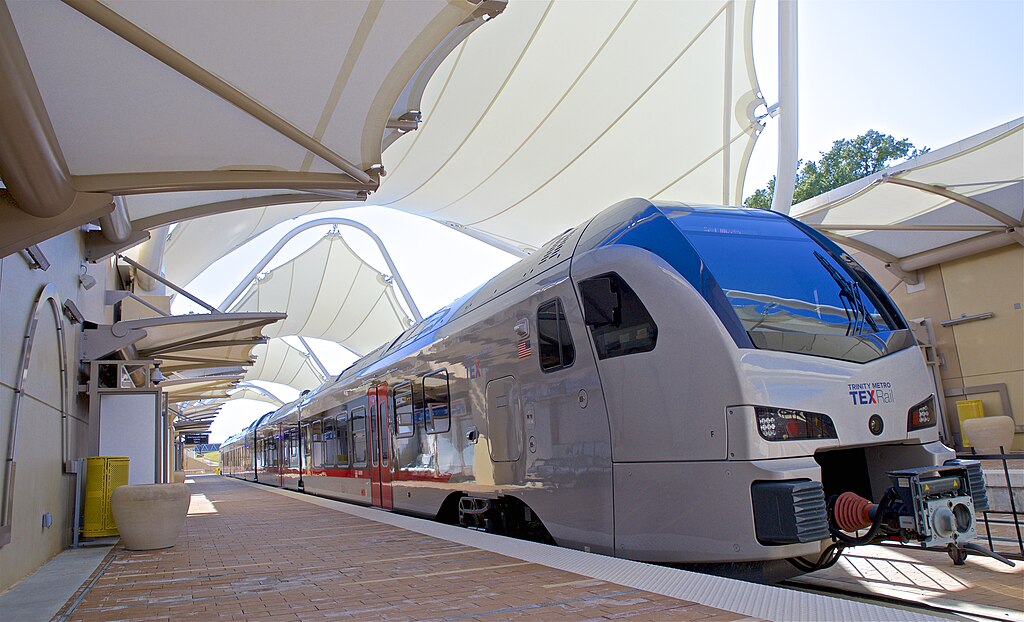So your argument is that the platform height standards set elsewhere only apply to new construction, so don't call it construction and then you can totally change platform heights?
No, my argument is that GO is not planning on building all-new stations to handle a minimal increase in the platform height. And again, many/most of those stations have already had the various protections put in so that the amount of work required is relatively minimal - that is, doors have been designed to be moved, posts & columns are fine exactly where they are, stairs and ramps will need to be lengthened, more material will need to be added to the tops of the platforms, etc.
This is not all net-new construction. New structures are not needed to handle this. They won't be closing and relocating stations in order to facilitate the change in platform height, as has been done elsewhere.
The whole point of building the new LRT lines and Ontario Line trains using standard gauge o instead of TTC gauge was to be able to buy off the shelf products, backward compatibility with the existing system be damned. The bombardier bilevel is the only train with 610mm floor height.
And how much shared trackage on those LRT lines is there with the GO network?
When a new line is built that is independent of all of the other systems and lines, they can write the specs. (See: Ontario Line) When something is an addition to an existing network/system, you can't just make up rules on the fly and hope to use them. That's what it sounds like you would like GO to do, and that's not an option. Interoperability is a thing.
I agree level platforms are part of a solution for faster boarding, but as with all things the weakest link is the determining factor on boarding and alighting times, and for the bi-levels it is people stuck in the stairway and crowded around limited doors that is the limiting factor right now, not a couple of steps.
The research into these kinds of things don't agree with your conclusion.
But again, as an ultimate goal, yes - I think that we can all agree that whatever form the new equipment will take will need more sets of doors per length of train.
There is still a lot of improvement that can happen before then, however. And level boarding with the current equipment - should they get it done in time - will go a long way towards meeting that goal of minimizing dwell times.
The more common platform height standards that have been set are not unsurprisingly step increments of each other either. The average step height is 180mm. So steps are 180mm, 360mm, 540mm, 720mm, 900mm, 1080mm, and 1260mm which is closely aligned to the more common platform heights of 200mm (+20), 380mm (+20), 550mm (+10mm), 760mm (+40), 915mm (+15), 1100mm (+20), and 1250mm (-10). Why is this important? Because as you raise part of a platform or lower a part of a platform, doing it at step heights is easy (one more step on a flight of stairs, reduced railing requirements on one or two railing free steps, etc.) but something completely off will require slopes or ramps and is more likely to require more railings.
They have these things called ramps. You may want to look into them. They're quite neat.
So, rushing to build 610mm platforms because some engineer at UTDC in Thunder Bay drew the floor at that height in the 1970s doesn't make sense to me. It doesn't make sense in is ability to solve the primary issues related to boarding and alighting times, it doesn't align to standards that could improve procurement options, it doesn't align to civil/architectural considerations like standard step height, and it completely tied to a rail car designed in the 1970s for rush hour commuter service. Why double down on a 1970s rush hour commuter for height? Please tell me the future is better than 1970s V2.0.
Perhaps it isn't clear to you, but this isn't rushing. There is a reason why the accessible ramps have all been built to that height. There is a reason why Salt Lake City built their platforms on their whole, new system at that height.
This has been in the plans for decades. And while it may be arguable that they should have gotten off their duff a long time ago to execute that plan, it's pretty obvious now that they have a pretty methodical approach to it, even if it is slow.
Dan





